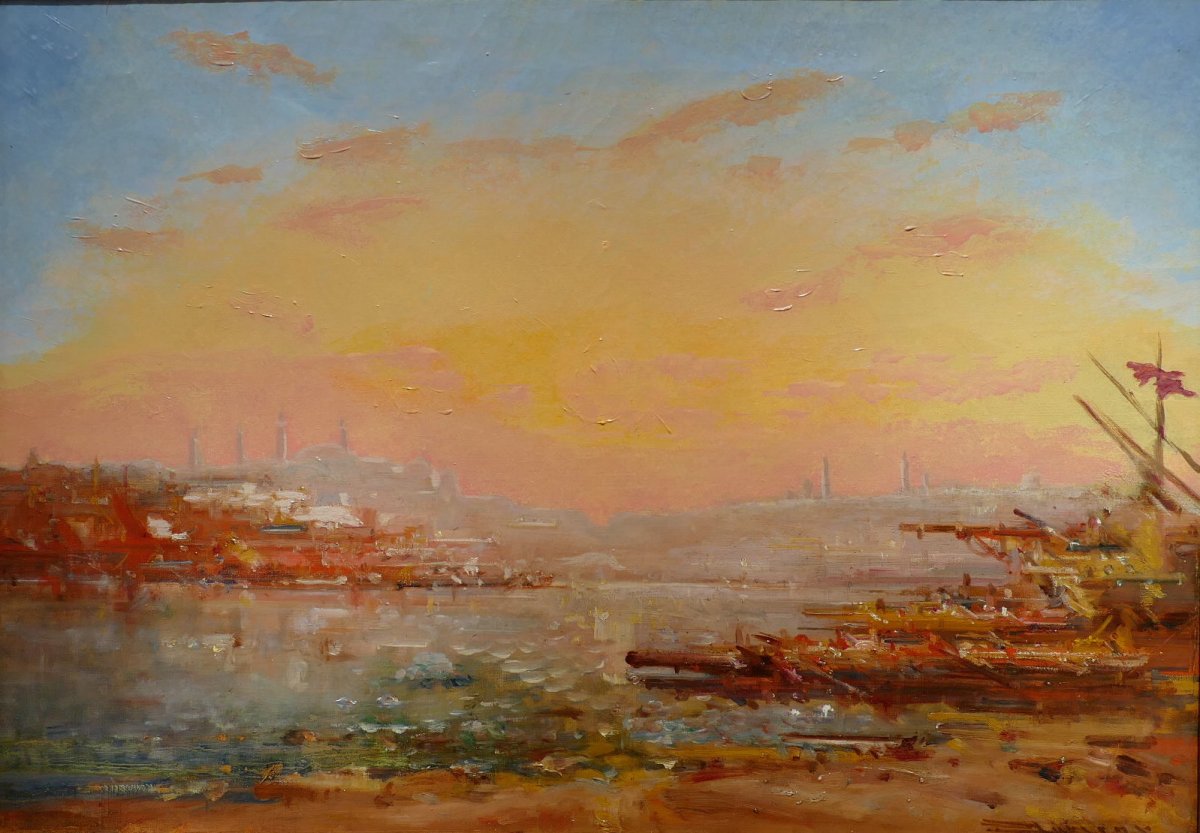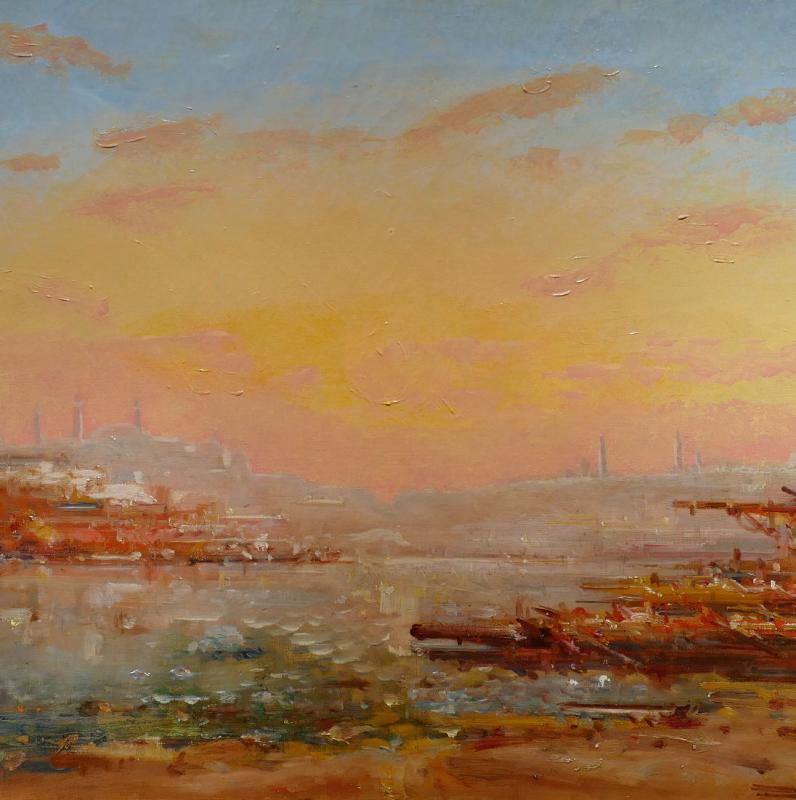Sunny view of Constantinople.
Oil on canvas signed lower right.
18,5 x 26 in
Certificat of authenticity.
Museums : Avignon, Chateau Thierry, Constantinople, Reims.
Henri Duvieux was an artist influenced by Orientalism, a widespread concern to many artists from the mid-to-late nineteenth century. These artists became infatuated with everything that was not European and began traveling through the Maghreb region of North Africa, and in countries as far east as Japan or China. While these artists showed their international interest in their compositions, the exact theme often varied. Duvieux used his travels to describe his interest in landscape and its effects, focusing less on the human element of orientalism and more on landscape and architecture. His choice of images was popular not only because of his alliance with Orientalism, but also because it allowed the public to recognize the presence of certain sites that the artist used.Few details are known of his life, by the fact that he has rarely exhibited at the Paris Salon. He was born in 1855 in Paris. He was a student at Mr. Marilhat, often cited as Prosper Georges Antoine Marilhat.Duvieux debuted at the Paris Salon with a view of Venice and a view of Constantinople, two oil paintings. Duvieux was an avid traveler, traveling as far as Constantinople seeking perfect inspiration. He has undertaken such adventurous journeys as a young man since his debut at the Salon at the age of twenty-five. The frequency of Duvieux's travels is also not known. He may have traveled, collecting studies along the way and performing them on his return to his studio. He may have traveled frequently and performed scenes on the spot. Maybe he had a studio in Venice, which would explain his frequent representations of this site.Duvieux has relentlessly pursued representations of Venice and Constantinople throughout his career. Most of these Venice-based paintings are the Grand Canal in Venice, the Sunset and the Panorama with Sailboats and Gondolas.His last appearance at the Salon was with a projection of the Arab Camp. Maybe he did not attend the Salons because he simply did not need it, his travels and commissions may have been busy enough to support him throughout his stay. life. Most of these views almost invariably incorporated aspects of the sea, somewhat in the tradition of the 18th century artist like Canaletto, but also recalls his contemporary Felix Ziem. Duvieux used an impressionistic color similar to Turner's seascapes to convey intense light and brilliant sunsets and sunrises. Architectural elements are also important for Duvieux, who interprets them with care and precision.Combined with the increasing ease of travel and the growth of travel, Duvieux's images found an audience searching for works that reminded them of their travels or the journeys they wished to undertake.
violondingres.fr








































 Le Magazine de PROANTIC
Le Magazine de PROANTIC TRÉSORS Magazine
TRÉSORS Magazine Rivista Artiquariato
Rivista Artiquariato